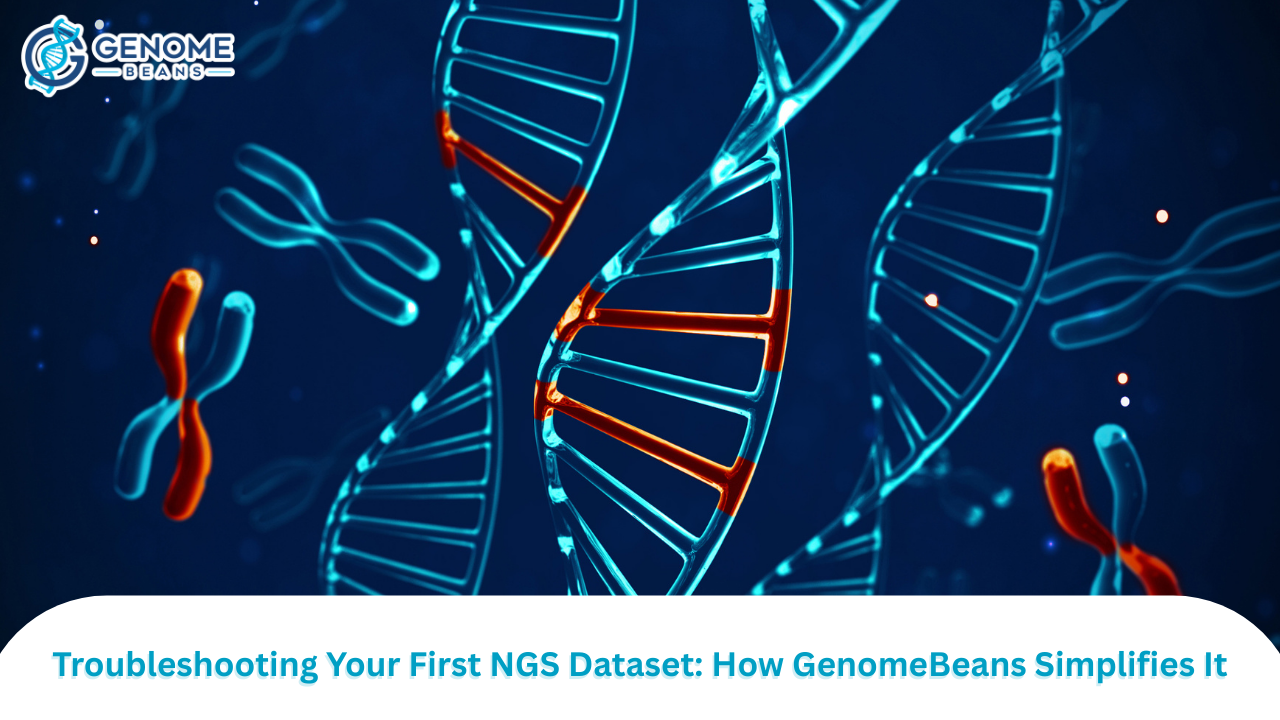Troubleshooting Your First NGS Dataset: How GenomeBeans Simplifies It
Key Takeaways
- Always verify file type, structure, and read quality before starting analysis.
- Perform thorough quality control to detect and fix issues early.
- Use the correct reference genome version and ensure proper indexing.
- Structured pipelines reduce human error and improve reproducibility.
- Patience, clear documentation, and step-by-step troubleshooting lead to better results.

Next-Generation Sequencing (NGS) is essential in modern life sciences, but raw data can be daunting for beginners. From file formats to quality issues, challenges are common — and organized workflows can help.
Understanding Your Data
Most datasets come in FASTQ format with reads and quality scores. Check:
- File type (FASTQ, BAM)
- Paired-end or single-end
- Read length and quality distribution
Start with Quality Control
Before analysis, use QC tools like FastQC to check base quality, adapter contamination, and overrepresented sequences. Poor quality may require trimming with tools like Trimmomatic or Cut adapt.
Common Early Issues
- Low-quality reads → Trim before alignment.
- Adapter contamination → Remove to improve accuracy.
- Incorrect metadata → Keep names and conditions consistent.
- Incompatible formats → Ensure proper compression and compatibility.
Reference Genomes
Download the correct version (e.g., hg38) and index it for your aligner. Mismatches cause misalignments.
Structured Pipelines
Automation tools like Snakemake or Nextflow guide QC → Trimming → Alignment → Quantification → Visualization, reducing human error and improving reproducibility.
Downstream Errors
Watch for low mapping rates, missing reads, or high duplication. Use logs and stats to locate problems.
Conclusion
By understanding formats, performing QC, using the right tools, and following structured workflows, you can troubleshoot NGS datasets effectively. Patience, documentation, and learning from errors are key.







